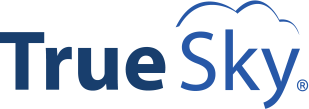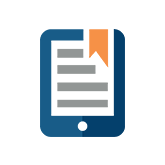Why You Should Be Doing a Monthly Rolling Forecast and How to Do It Successfully
 Rolling forecasts have risen greatly in popularity, and for good reason.
Rolling forecasts have risen greatly in popularity, and for good reason.
Today’s businesses are dealing with a different world — it is fast-paced, interconnected, and more competitive than ever. This can pose a challenge for any CFO. Finance teams must process huge amounts of data and forecast (or often reforecast) accordingly.
It can get to the point where it might feel as though the annual budget is out of date before the year’s end. But that is not how it has to be.
Rolling forecasts allow businesses to take more frequent stock of their finances, monitor their business cash flow, adjust to changes in the market, and much, much more. Overall, it can make you more agile, give you better business intelligence, and fuel growth.
For most businesses, a monthly rolling forecast is the best way to go. A month (30 days) is typically a good amount of time to monitor short-term projects, spot trends, and accurately predict results. Some organizations, such as retailers and hotels, might even do weekly or perhaps daily rolling forecasts, but for the majority a month is a good rule of thumb.
If you want to take the plunge into monthly rolling forecasts, how can you do it successfully? Here are a few tips to help you get started:
- Ask What You Want to Get Out of It
Business strategy starts with the why. What is the goal you are hoping to achieve through more frequent forecasting? This should tie back to your strategic plan.
For instance, if you have an annual goal of reducing operating expenses by 5% across the board, then there will likely be milestones that you will want to look for each month along the way.
Knowing what you want from the forecasting process will help you develop a plan.
- Assess Your Business and Industry
Depending on how quickly your industry is changing, it will have an impact on your requirements. As we mentioned above, some industries move so quickly that even a monthly rolling forecast is not frequent enough.
Take a look at your environmental need and ask yourself if you need to budget more frequently. If your business is prone to environmental changes, such as exchange rates, political changes, market changes, etc., you should take that into account for your forecasting.
- Consider Your Current Planning, Budgeting, and Forecasting Tools
Moving to a rolling forecast might require you to take a look at your current budgeting and forecasting software — and perhaps might require a tool in a larger environment.
One of the roadblocks to more frequent forecasting for many businesses is the extra time and resources it demands. But certain software can significantly ease the burden. Take, for example, our corporate performance management tool, True Sky. It automates your forecasting process, which makes it much easier to monitor and leads to more accurate reporting.
Moving to a rolling forecast can seem daunting at first, but the results can be well worth it. Greater accuracy, improved business decision making, more flexibility and ability to adapt, improved use of time and increased ability to anticipate risks and opportunities are just some of the benefits.
Want to learn more about how to successfully move to a monthly rolling forecast? Download our free eBook, Why You Should Be Doing Rolling Forecasting and How to Do It Successfully .
To learn more about True Sky’s capabilities, contact us by visiting www.truesky.com or calling 1 855 878 3759.



